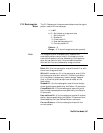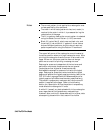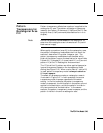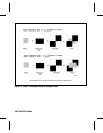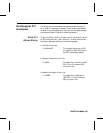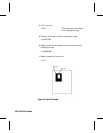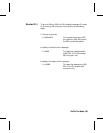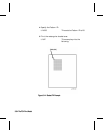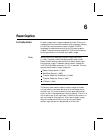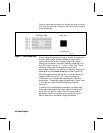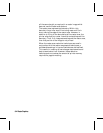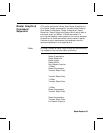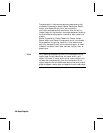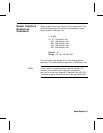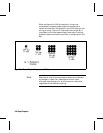
6
RasRaster Graphicster Graphics
Introduction A raster image is an image composed of pixels. Pictures in
newspapers or on television screens (also, a page printed by
this printer) are examples of raster images. The PCL
language includes commands for printing raster graphic
images. These commands enable PCL 5 printers to receive
binary data and print the data as a raster image.
Note When the printer receives the Start Raster command
(?*r#A), it enters a restricted state called raster mode.
Raster mode locks out commands that affect rendering of
the graphics image. These commands remain locked out
until the End Raster command (?*rC) is received. The only
commands allowed in raster mode are:
Raster Compression (?*b#M)
Seed Row Source (?*b#S)
Transfer Raster by Row/Block (?*b#W)
Transfer Raster by Plane (?*b#V)
Y Offset (?*b#Y)
The binary data used to create a raster image is divided
into dot rows: a row describes a strip of the image that is
one dot high. For monochrome printers, each dot position
within a row is represented by a binary data bit. If a bit in a
row is set to one, a dot is printed; if the bit is set to zero, no
dot is printed for that position. A dot row of raster image
data is transferred to the printer as a string of bytes
containing a dot-per-bit representation of the row.



